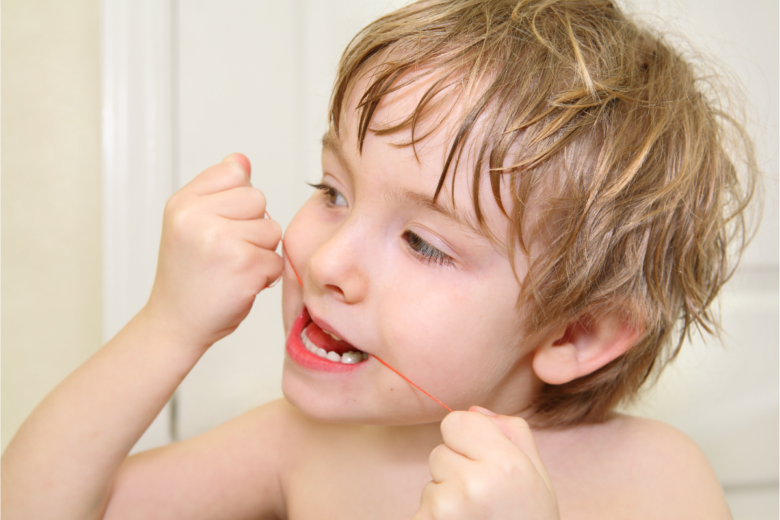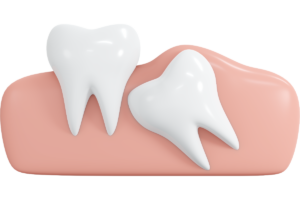Good gum health is an essential part of maintaining a healthy mouth and, by extension, a healthy body. The gums play a crucial role in supporting the teeth and protecting the underlying bone. Gum disease, which can range from gingivitis to more severe conditions like periodontitis, not only affects the mouth but can also have a direct impact on overall health. Research has shown that poor gum health is linked to a variety of systemic health issues, including heart disease, diabetes, and even respiratory conditions. Maintaining healthy gums is not only vital for preventing dental problems but also for promoting your overall well-being.
In addition to the physical benefits, maintaining good gum health also has an impact on your quality of life. Healthy gums allow you to enjoy eating without pain or discomfort, speak clearly, and smile confidently. On the other hand, gum disease can lead to bad breath, gum bleeding, tooth loss, and a decrease in self-esteem.
Prevention is key when it comes to gum health. Regular dental check-ups, consistent brushing, and flossing are essential habits to incorporate into your daily routine. By taking care of your gums, you are not just avoiding dental issues, but also safeguarding your overall health. It’s important to recognize that gum health is a reflection of overall hygiene and lifestyle, including diet, smoking habits, and stress levels.
Finally, staying informed about the importance of gum health and taking proactive steps to protect it can lead to a longer, healthier life. By prioritizing your oral hygiene, you contribute to a healthier mouth and a healthier body, ultimately improving your long-term health and well-being.
How Exercises Can Benefit the Gums and Oral Health
While brushing and flossing are essential components of daily oral hygiene, exercises that specifically target the gums can further enhance gum health and prevent gum disease. These exercises are designed to stimulate blood circulation in the gum tissues, strengthen the gums, and reduce inflammation, all of which contribute to healthier gums. By incorporating gum-focused exercises into your oral care routine, you can improve the health of your gums, promote healing in cases of mild gingivitis, and reduce the risk of developing more serious gum conditions. In this article, we’ll explore the top five exercises to help you maintain healthy gums and enhance your overall oral health.
Exercise 1: Finger Gum Massage
A simple yet effective exercise for promoting gum health is massaging your gums with your fingers. This technique stimulates blood circulation in the gum tissues, helping to keep them healthy and strong. To perform a gum massage, wash your hands thoroughly and use your index and middle fingers to gently massage your gums in a circular motion. Start from the front of your teeth and work your way back, ensuring that you cover the upper and lower gums. This gentle pressure helps increase circulation, reducing inflammation and promoting the healing of minor gum issues such as swelling or mild gingivitis. Practicing this exercise daily, especially before bed, can improve gum vitality and reduce discomfort.
Exercise 2: Using Dental Floss to Stimulate Circulation
Flossing isn’t just about cleaning between your teeth; it can also help stimulate blood flow to your gums. When you floss, the movement of the floss between the teeth not only removes plaque and debris but also gently massages the gum line, promoting better circulation. This increased blood flow nourishes the gum tissue and helps to keep it healthy. Be sure to floss correctly—gently move the floss up and down the side of each tooth and curve it around the base of the tooth near the gum line. Avoid snapping or forcing the floss, as this can cause damage to the gums. Regular flossing, at least once a day, can greatly enhance gum health and prevent gum disease.
Exercise 3: Proper Gum Brushing Technique
Brushing your teeth with the right technique doesn’t only benefit your teeth—it can also be an effective way to care for your gums. To ensure you’re taking care of both, use a soft-bristled toothbrush and a fluoride toothpaste. Hold the toothbrush at a 45-degree angle to your gum line and use gentle, circular motions. Avoid aggressive brushing, as it can irritate the gums and even cause recession over time. Make sure to brush along the gum line to remove plaque buildup, which can lead to gum disease. Additionally, don’t forget to gently brush your tongue and roof of the mouth to remove bacteria that can contribute to gum inflammation. A consistent, proper brushing routine will contribute to healthier gums and overall oral hygiene.
Exercise 4: Gargling with Natural Solutions for Gum Health
Gargling with natural solutions such as saltwater or essential oils can significantly contribute to gum health. Saltwater is known for its natural antibacterial properties, which help to reduce inflammation and kill bacteria in the mouth. Simply mix a teaspoon of salt in a glass of warm water and gargle for 30 seconds to a minute, especially after meals. For a more soothing experience, you can use essential oils such as tea tree oil or peppermint oil. These oils are known for their antimicrobial and anti-inflammatory properties. Add a few drops to water and gargle to help promote healthy gums and reduce discomfort caused by gum issues. This practice can be particularly beneficial for reducing gum irritation and supporting the healing process after dental procedures.
Exercise 5: Crunchy Foods and Their Contribution to Gum Health
Incorporating certain crunchy foods into your diet can be a natural way to support gum health. Foods like apples, carrots, celery, and cucumbers provide a natural “massage” for your gums while you chew. The act of biting and chewing these fibrous, crunchy foods stimulates blood flow to the gums, helping to keep them strong and healthy. Additionally, these foods help to naturally clean your teeth by scrubbing away plaque, further supporting gum health. Eating these crunchy foods regularly as snacks or part of your meals can serve as a simple yet effective exercise for maintaining healthy gums and overall oral hygiene.
By incorporating these exercises into your daily routine, you can promote healthier gums, reduce the risk of gum disease, and enhance your overall oral health. These exercises, combined with good hygiene practices, will help you maintain strong, healthy gums for years to come.
Integrating Exercises into Your Oral Care Routine
Incorporating gum-focused exercises into your daily oral care routine is an easy and effective way to enhance your overall dental health. While traditional methods such as brushing, flossing, and regular dental checkups remain essential, adding simple exercises like gum massage, proper brushing techniques, and consuming crunchy foods can offer significant benefits. These exercises help stimulate blood flow, reduce inflammation, and support the strength of your gum tissue, ultimately contributing to the prevention of gum disease.
To make these exercises a part of your routine, start by practicing a few of them daily—whether it’s massaging your gums before bed, flossing correctly, or enjoying healthy, crunchy snacks. You don’t need to dedicate a lot of extra time; just a few minutes a day can make a big difference in your gum health. Over time, you’ll notice improvements in gum appearance and a decrease in common issues like swelling or bleeding. Integrating these simple exercises will complement your traditional oral hygiene practices, offering a holistic approach to maintaining healthy gums.
Long-Term Benefits for Gums and Oral Health
The long-term benefits of maintaining a healthy gum care routine go beyond just a beautiful smile. Healthy gums are the foundation for overall oral health, supporting your teeth and preventing issues such as gum recession, tooth loss, and even systemic diseases. By practicing these exercises consistently, you’re not only reducing the risk of gum disease but also improving your overall health. Studies have shown that gum disease can be linked to various conditions, including heart disease, diabetes, and stroke, so taking proactive steps to care for your gums now can lead to better long-term health outcomes.
Incorporating gum exercises into your routine helps you build a strong, resilient foundation for your oral health, contributing to a brighter, healthier smile for years to come. Remember, healthy gums are not just a cosmetic benefit; they are vital for your well-being. By dedicating time to proper gum care, you are making an investment in your overall health that pays dividends throughout your life.
Furthermore, committing to a long-term gum care routine helps prevent the progression of gum disease, which can sometimes go unnoticed until it reaches more severe stages. Early detection and prevention are crucial, as untreated gum disease can lead to complications that affect both your oral health and your overall health. By practicing good oral hygiene habits, including regular brushing, flossing, and incorporating gum exercises, you’re proactively reducing the chances of gum disease and the complications associated with it.
In the long run, the benefits of maintaining healthy gums extend beyond just preventing dental issues. Studies have demonstrated a strong connection between gum health and the risk of chronic conditions such as respiratory infections, rheumatoid arthritis, and even pregnancy complications. By focusing on your gum health now, you are taking steps to protect your body from these systemic health risks, which reinforces the importance of maintaining good oral hygiene for your overall well-being.
Ultimately, making gum care a priority is not only about preserving your smile but also about ensuring that your body remains strong and healthy for the years to come. Small, consistent efforts today will result in lasting benefits, including fewer dental visits, reduced health risks, and a better quality of life. Your gums are an essential part of your body, and by investing in their health, you are investing in a future of optimal health.




